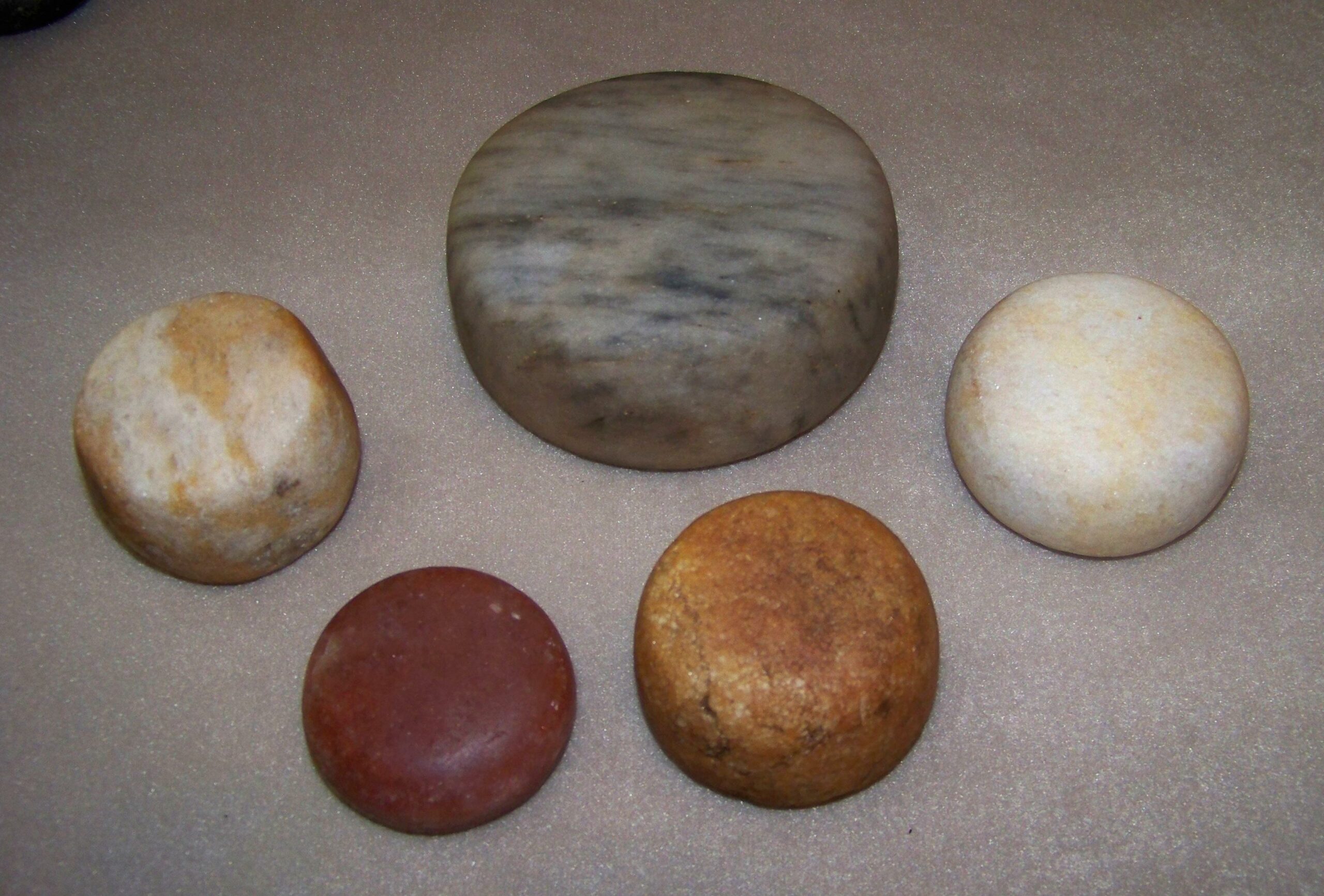by Bruce Butts, Winterville, Georgia

One of the most interesting artifacts is the discoidal, and the circle roller disc is my favorite type. Maybe it is because the majority of the circle roller discoidals come from within 100 miles of my home. When I display my collection, people always ask about the different shape of the circle roller.
Most people have heard the stories about “chunkee,”where the Indians rolled the round stones and threw spears at the point where the disc would stop. Most people quickly realize that the circle rollers would roll in a circle instead of the straight line like the other discoidals. The most often asked question is “why a circle.”
Circle rollers were used for an entirely different type of game. You could probably call it “chunkee bowling.” There have been two “bowling” alleys actually found still intact. One alley actually had seventeen circle rollers found on the alley and in the pockets where the circle roller would curve into, apparently to score points.
In 1932 William Colburn discovered three alleys while excavating the Princess mound on the J.J. Greenwood farm in Rabun County, Georgia. On the south side of the mound, a group of field rocks was discovered. At the same level, a hard baked clay runway was also found. The runways were about 2 1/2 feet wide and perfectly level. At the end of the runways, groups of rocks were arranged so that when the circle roller was rolled down the alley, the disc would curve into certain pockets (see the diagram).

Baked clay runways; possibly chunkey alleys. It has been proposed that these were the receiving end of circle-roller discoidals based on a survey of North Georgia archaeological sites. The field rocks were presumably used to aid in scoring.
Another chunkee alley was found at another site in Monroe County called Towaliga. This is near where the Ocmulgee and Towaliga Rivers come together. The alleys at this site were 160 feet long and 6 feet wide, but basically built just the same otherwise as the alleys at the Princess mound. These two sites are approximately 80 miles apart.
During the excavation at the princess mound, there were 32 discoidals found. These included biscuit, barrel, and Tennessee types, along with the 17 circle rollers.
Most circle rollers show some damage along the widest edge, since this is the part that would hit the ground first. Most are found within 100 miles of Rabun County, Georgia. I own one found on the Gulf Coast of Florida, and I have seen pictures of circle rollers from as far away as Arkansas, but it is my understanding that these are very rare finds the farther you go from Georgia. Most of the circle rollers pictured with this article are from the northeast corner of Georgia where the bowling alleys were found.